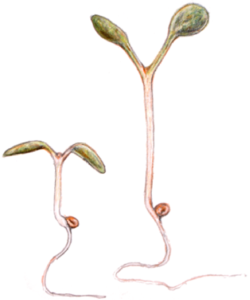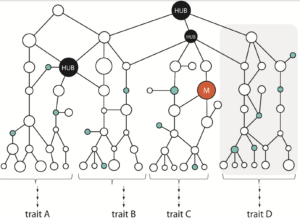Temperature is a major factor governing distribution and seasonal behavior of plants. Being sessile, plants are highly responsive to small differences in temperature and adjust their growth and development accordingly. The suite of morphological and architectural changes induced by high ambient temperatures is collectively called thermomorphogenesis (Quint et al., 2016, Nature Plants). Understanding the molecular genetic circuitries underlying thermomorphogenesis is particularly relevant in the context of climate change as this knowledge will be key to breed for thermo-tolerant crop varieties in a rational fashion.
The transcription factor PHYTOCHROME INTERACTING FACTOR 4 (PIF4) has emerged as a key player in shoot thermomorphogenesis which controls phytohormone levels and their activity. PIF4 expression, protein levels, and activity are directly regulated by thermosensors such as phyB, ELF3 and PIF7 and involve a complex regulatory network including light signaling pathways, the circadian clock, epigenetic mechanisms and chromatin-level regulation (Delker et al. 2022, Current Opinion in Plant Bilology). In contrast, far less is known about the molecular mechanism that regulate root thermomorphogenesis (Ai et al. 2023, EMBOJ), including the nature of the root thermosensor(s).
The primary thermomorphogenesis research interests are currently:
- Root thermomorphogenesis
- Structure-function analyses of the ELF3-PIF4 regulatory module
- Translational thermomorphogenesis research


